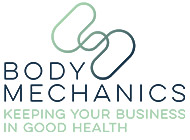Sprains and Strains
Sprains and strains are injuries which occur to our body’s soft tissues, such as our muscles, tendons, and the ligaments - our connective tissues. However, there is a difference between the two.
Sprains refer to an overstretching or tearing of ligaments which subsequently stress a joint - tissues that connect two bones together. Common examples are a sprained ankle or wrist
Strains refer to an overstretching or tearing of muscles or tendons - tissues that connect a muscle to a bone. Common examples are the back or hamstring muscles
How do Sprains and Strains Occur?
Strains
Acute (immediate) injuries - tend to be caused by an overloading of the muscle or tendon during activity such as lifting, where the load is too heavy and/or lifted using incorrect technique
Chronic (occur over time) injuries - tend to result from repetitive movements where the muscle or tendon is put under strain frequently.
Sprains
Sprains tend to occur in highly mobile areas of the body, such as the knee, ankle, wrist or thumb and happen due to ‘landing’ awkwardly on uneven surfaces when pivoting, jumping, overextending or bracing yourself
Common Risk Factors
- Exertion - pushing the body to perform beyond its limits, spontaneously or repeatedly
- Fatigue
- Incorrect equipment and/or technique
- Uneven surfaces
Common symptoms are:
- Pain and/or tenderness
- Localised inflammation and swelling
- Bruising
- Tightness and tension in surrounding areas
- Reduction in mobility and flexibility
- Muscle and/or joint weakness
- Muscle spasms
- Symptoms alleviating during a short period of rest, but feeling worse after a mid to long period of inactivity
- Sprains - ongoing susceptibility to recurring injury, due to ligaments becoming overstretched and loose, not returning to their former, shorter length or strength
Preventative Action:
Consult a Physical Therapist to receive bespoke rehab exercises.
- Stretching - start off gently and gradually increase to help with mobility
- Strengthening - build up strength in soft tissues gradually overtime to help with stability
- Be Realistic - know your limits
- Use Supports and Braces - only if necessary and try not to become reliant
Corrective Action:
- Rest - stop activities that cause discomfort
- Ice - use an ice pack or slush bath (ice and cold water) every 15 mins for the next 2-3 hours immediately after the injury
- Compress - wrap the injured area moderately tightly to prevent any further swelling. An elasticated bandage or similar kind of wrap is ideal
- Elevate - keep the injured area elevated higher than your heart to help prevent swelling. Using a sling or lying down using pillows to lift the injured area may be necessary.
- Refer - if numbness is being experienced at all and/or if symptoms persist for more than 48 hours, seek medical help
Begin to re-use the injured area after 48 hours if possible. If you can’t and/or unable to , seek medical help
Use a combination of the below to help relieve your symptoms:
Cold Therapy - a cold gel or cold pack can be used on the localised area to reduce any present inflammation
Heat Therapy - a heat lotion, gel or pack can be used on tight muscles around the injured area, not on, the injured area itself
Painkillers - over the counter medicines like ibuprofen (anti-inflammatory) and paracetamol (compound analgesic/painkiller) can help reduce pain and increase comfort in the short term and as a temporary measure.
Physical Therapy - Physiotherapists and Sports Massage Therapists will all be able to help treat and sprains or strains, gradually increasing mobility and strength
Useful Equipment
All of the below equipment is available from our Partner Providers, Physique at 10% discount using the code: BODYMECHANICS
- Hot/Cold Pack with Sleeve
- Elasticated Bandage
- Triangular Sling
- Adjustable Arm Sling
- Cold Gel
- Anti-inflammatory Gel
- Heat Lotion


